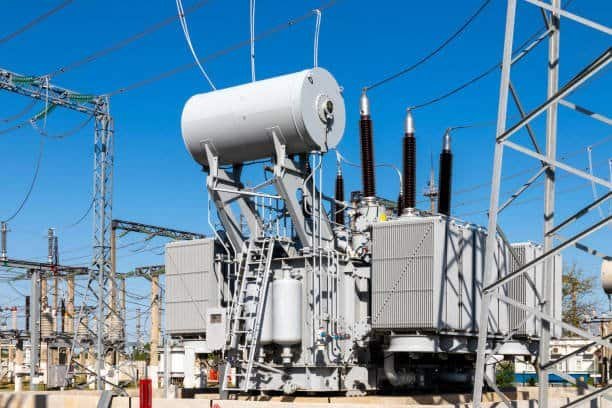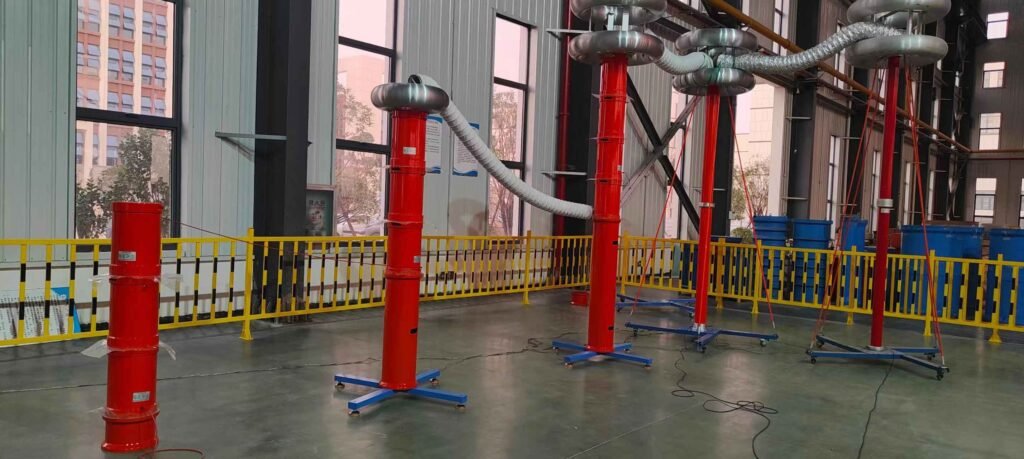Transformers are essential components in power systems, facilitating the efficient transmission and distribution of electrical energy. They step up voltage levels for long-distance transmission, minimizing energy losses, and step down voltage for safe delivery to end users. Without transformers, large-scale power grids would not be able to operate efficiently or reliably. These critical assets are used across various sectors, including utilities, industrial plants, and renewable energy installations.
The Importance of Regular Testing for Reliability and Performance
Given their continuous operation and exposure to electrical, thermal, and environmental stresses, transformers are prone to insulation degradation, partial discharges, and other aging-related issues. Failures in transformers can result in significant disruptions, costly repairs, and power outages. To ensure reliable performance and extend transformer lifespan, regular testing and preventive maintenance are crucial. Routine tests help identify potential issues early, allowing timely repairs or replacements to avoid catastrophic failures.

1 . Introducing AC Resonance Testing: A Critical Tool for High-Voltage Equipment
AC resonance test system is an advanced, non-invasive diagnostic equipment designed to assess the health of high-voltage equipment, such as transformers. It uses resonant circuits to generate high test voltages while keeping the input power requirements low, making it efficient and practical for field testing.
Unlike DC testing, which may leave residual charges or give incomplete results, AC resonance testing simulates real operating conditions, making it ideal for evaluating insulation integrity. As part of routine and preventive maintenance, AC resonance testing helps detect early-stage insulation defects and ensures that transformers can operate safely and efficiently under actual working conditions.
2. What is AC Resonance Testing?
2.1 Definition and Working Principle of AC Resonance Testing
AC resonance testing is a high-voltage testing method used to evaluate the insulation integrity of electrical equipment such as transformers, power cables, and switchgear. This technique leverages the principle of electrical resonance—when the inductive reactance and capacitive reactance of a circuit are equal, they cancel each other out, minimizing impedance. At this resonant point, the circuit allows the flow of large currents, generating high test voltages with minimal power input from the source.
The purpose of AC resonance testing is to create a voltage stress condition similar to the equipment’s real-world operating environment, making it ideal for detecting insulation faults, partial discharges, and potential breakdown points that could lead to equipment failures over time.
2.2 Explanation of Series and Parallel Resonance Methods
There are two primary configurations used in AC resonance testing: series resonance and parallel resonance. Each method serves specific purposes depending on the equipment under test and the testing environment.
2.2.1 Series AC Resonance Test System :
In this configuration, the test object is connected in series with the inductance and power source. At resonance, the inductive and capacitive reactances cancel out, creating a high voltage across the test object. This method is preferred for high-voltage equipment like transformers and cables, as it offers precise control over the test voltage with lower power consumption.
Key Benefit:
Series resonance reduces the burden on the power supply, as most of the current circulates within the resonant circuit. This makes it efficient for testing large, high-capacitance devices such as transformers.
2.2.2 Parallel AC Resonance Test System :
In a parallel configuration, the inductance and capacitance are connected in parallel, with the test object integrated into the circuit. At resonance, the current reaches a maximum, which can be useful for testing low-impedance components or smaller equipment. However, this method requires more input power than the series approach and is less common for field applications involving large transformers.
2.3 How Resonance Helps Generate High Test Voltages with Minimal Power Input
One of the biggest advantages of AC resonance testing is that it can generate high voltages with minimal input power by exploiting the resonant frequency of the circuit.
- Energy Efficiency: At resonance, the inductance and capacitance exchange energy efficiently, reducing the overall power demand from the source. As a result, the input power required is only a fraction of what would be needed to produce the same voltage using conventional methods.
- High Test Voltages: This method allows the generation of voltages ranging from tens of kV to hundreds of kV, suitable for testing transformers, cables, and other high-voltage equipment.
- Minimized Heat and Power Losses: Since the reactive components balance each other out at resonance, power losses are minimized, keeping the equipment and test environment cool and safe.

3. Common Transformer Issues that AC Resonance Testing Can Detect
AC resonance testing is highly effective in identifying issues that can compromise the performance and reliability of transformers. By applying high voltages similar to actual operating conditions, this method helps uncover hidden faults before they lead to failures. Below are some of the most common transformer issues that AC resonance testing can detect:
3.1. Insulation Degradation or Aging
The insulation system within a transformer—comprising solid (paper) and liquid (oil) insulation—deteriorates over time due to electrical, thermal, and environmental stress. Aging insulation can result in increased internal resistance, reduced dielectric strength, and higher risks of failure.
How AC Resonance Testing Helps:
- Detects weakening of insulation by simulating high voltage stress conditions.
- Identifies subtle insulation issues that could grow into severe faults.
- Helps assess the remaining lifespan of the transformer by monitoring insulation health over time.
3.2. Partial Discharge Activity Within Windings
Partial discharges (PD) occur when insulation begins to break down locally but not entirely, generating small electrical sparks. If left unaddressed, PD can gradually erode insulation, leading to significant failures in windings.
How AC Resonance Testing Helps:
- The high voltages used in resonance testing can trigger PD activity, revealing weak points in the insulation.
- PD analysis during the test allows early detection, giving operators time to intervene.
- Reduces the chance of winding failures and costly downtime.
3.3. Electrical Breakdowns in Bushings and Tap Changers
Bushings allow safe passage of electrical conductors through grounded transformer enclosures, while tap changers adjust voltage levels. Both components are critical for the reliable operation of transformers but are prone to breakdowns due to insulation wear or mechanical issues.
How AC Resonance Testing Helps:
- Identifies insulation weaknesses or breakdowns in bushings under high voltage conditions.
- Detects abnormalities in tap changer performance, such as contact wear or misalignment.
- Prevents sudden transformer outages by addressing these issues early.
3.4. Leakage Currents and Dielectric Failures
Leakage currents can occur when unintended paths allow electricity to flow through insulation, indicating a breakdown or contamination. Dielectric failure occurs when the insulating material can no longer withstand electrical stress, leading to catastrophic transformer failure.
How AC Resonance Testing Helps:
- Monitors the occurrence of leakage currents under high-voltage stress conditions.
- Detects areas where dielectric strength is compromised, preventing equipment failure.
- Ensures that the transformer’s insulation system can handle operational voltages safely.

4 Benefits of AC Resonance Testing for Transformers
AC resonance testing offers multiple advantages for transformer maintenance and diagnostics, making it a preferred method for ensuring equipment health and performance.
AC resonance test system is an essential test tool for ensuring the reliability, safety, and efficiency of transformers. It offers accurate real-world simulations, non-destructive insights, and high sensitivity to insulation problems, helping operators detect and address issues early.
The cost-effectiveness and portability of this method further enhance its value, making it a crucial part of any transformer maintenance strategy. Adopting AC resonance testing ensures transformers remain operational, reliable, and well-maintained throughout their lifecycle.
4.1. Accurate Simulation of Operating Conditions
Unlike DC testing, which applies a different type of stress on the insulation, AC resonance testing uses AC voltage that closely mimics real-world conditions. Transformers operate under AC voltages in actual grid environments, so this method provides a more accurate assessment of their insulation performance.
- Benefit: Tests performed under AC conditions give a true representation of how the transformer will behave under operational stress, helping ensure reliability in service.
4.2. Non-Destructive Testing
AC resonance testing applies high-voltage stress without causing damage to transformer components, making it a non-invasive and non-destructive diagnostic method. This allows engineers to detect early-stage defects before they escalate into major issues.
- Benefit: Identifies potential problems—such as insulation degradation—without negatively affecting the transformer’s performance or structure.
4.3. High Sensitivity to Insulation Issues
AC resonance testing is capable of detecting subtle insulation problems and partial discharges (PD) that other methods might miss. Since the test applies high voltage across the transformer’s windings, it highlights weak points that could lead to future breakdowns.
- Benefit: Provides deep insights into the health of the insulation system, allowing operators to address minor issues before they result in catastrophic failures.
4.4. Cost-Effectiveness
By providing an accurate diagnosis without requiring invasive tests or unnecessary disassembly, AC resonance testing helps reduce maintenance costs. It also extends the lifespan of transformers by enabling timely repairs based on test results, preventing unexpected breakdowns and expensive downtime.
- Benefit: Minimizes operating expenses while maximizing the performance and longevity of critical equipment.
4.5. Portable Solutions for Field Testing
Modern AC resonance test systems are available in portable configurations, making them ideal for on-site testing. This eliminates the need to transport large transformers to specialized testing facilities, saving both time and logistical costs.
- Benefit: Increases efficiency by enabling quick, accurate testing directly in the field, especially for transformers installed at remote substations or industrial sites.
5.Applications of AC Resonance Testing in the Transformer Life Cycle
AC resonance testing plays a vital role throughout the transformer life cycle, from initial manufacturing to maintenance during operation. Below are the key stages where AC resonance testing is applied to ensure reliability, performance, and safety.
5.1. Factory Testing: Ensuring New Transformers Meet Quality Standards
Before transformers are deployed in the field, they undergo factory acceptance testing (FAT) to ensure they meet design and quality standards. AC resonance testing is used to assess the integrity of the insulation system and verify that the equipment can withstand operating voltage levels.
- Purpose:
- Detect manufacturing defects, such as insulation weaknesses or improper winding alignment.
- Ensure compliance with industry standards (e.g., IEC and IEEE).
- Benefit:
- Reduces the likelihood of early failures and ensures reliable operation from day one.
5.2. Commissioning Tests: Verifying Transformer Health After Installation
Once a transformer is installed, commissioning tests are performed to ensure the equipment is functioning correctly before being connected to the grid. AC resonance testing checks the insulation system under conditions that closely resemble actual operations, providing assurance that the transformer is ready for service.
- Purpose:
- Validate the integrity of the transformer after transportation and installation.
- Detect damage or defects caused during shipment, installation, or environmental exposure.
- Benefit:
- Ensures safe and reliable integration into the power system from the start, avoiding unexpected failures soon after commissioning.
5.3. Routine Maintenance: Detecting Issues During Scheduled Inspections
Throughout the transformer’s operational life, routine maintenance testing is essential to detect early signs of insulation degradation, partial discharges, or other developing issues. AC resonance testing is incorporated into scheduled inspections to assess the health of the insulation and ensure the transformer remains in optimal condition.
- Purpose:
- Identify insulation deterioration before it escalates into a significant problem.
- Monitor trends in insulation health over time for predictive maintenance planning.
- Benefit:
- Helps prevent costly downtime and extends the lifespan of the transformer by enabling timely repairs.
5.4. Troubleshooting & Diagnostics: Identifying the Root Cause of Failures
When transformers exhibit abnormal behavior or performance issues, such as unexpected voltage drops or overheating, AC resonance testing is used as part of the diagnostic process. It helps pinpoint the exact location and nature of faults, such as insulation breakdowns or partial discharges, allowing for precise troubleshooting.
- Purpose:
- Confirm the presence of insulation defects, dielectric failures, or leakage currents.
- Determine the root cause of abnormal operation, such as faults in bushings or tap changers.
- Benefit:
- Facilitates faster resolution of problems, minimizing downtime and preventing further damage to the transformer.
AC resonance testing is an indispensable tool throughout the transformer life cycle—from factory acceptance and commissioning to routine maintenance and troubleshooting. By ensuring high-quality manufacturing, verifying installation integrity, detecting developing issues early, and diagnosing faults accurately, AC resonance testing helps maintain transformer reliability, safety, and performance over the long term. This proactive approach minimizes downtime, reduces operational costs, and ensures uninterrupted power delivery.





